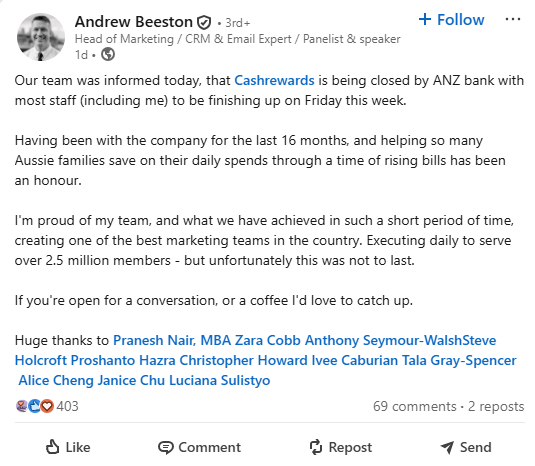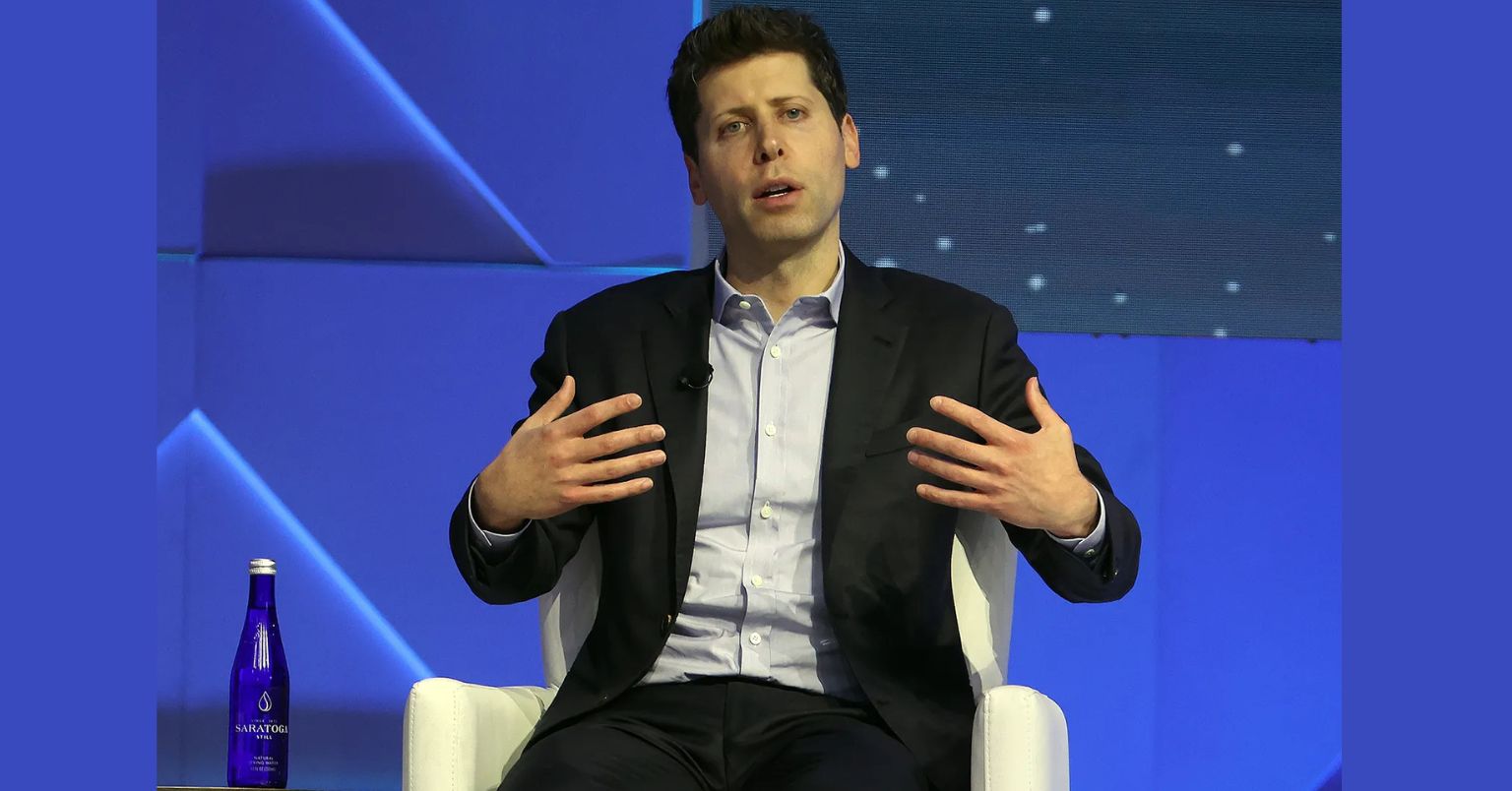
Australia and New Zealand Banking Group (ANZ) announced plans to eliminate approximately 3,500 jobs by September 2026, marking one of the largest workforce reductions in recent Australian banking history.
The cuts represent about 8% of the bank's 43,000-strong workforce and will cost the company A$560 million in restructuring charges.
New CEO Nuno Matos, who joined ANZ in May 2025 from HSBC, spoke about the news at a Sydney conference: "I hate to do this but it's for the future of the company... Those decisions are very tough to take... It should be the last resort."
The Story Behind the Layoffs
This wasn't ANZ's first layoff disaster under Matos. Just weeks before the formal announcement, the bank faced a humiliating scandal when an automated email mistakenly disclosed terminations to hundreds of employees before formal notifications. Staff received "exit dates" and laptop return instructions before anyone told them they were actually fired.
The August email blunder forced ANZ to expedite planned layoffs, conducting emergency redundancy meetings the same day to address staff concerns
That incident already had the Finance Sector Union calling emergency meetings and criticizing ANZ's "chaotic pace of change." Now, with 3,500 additional cuts announced, the union's frustration has only intensified.
And the restructuring goes beyond just employee terminations. ANZ will also reduce engagements with consultants and third parties, affecting around 1,000 managed services contractors. The bank expects minimal impact on customer-facing roles, but that's cold comfort for the thousands facing unemployment.
Why is ANZ Laying Off?
Here's what's interesting about ANZ's justification. Matos insists "This is not about profits; this is about getting the basic things right." But if basic operations require 3,500 fewer people, what exactly were those employees doing for years?
The Finance Sector Union didn't buy the explanation, calling the cuts "out of control" and describing the situation as "chaos." Union President Wendy Streets added: "That's not a plan, that's chaos."
ANZ is Australia's smallest Big Four bank but employs more people than bigger rivals like Westpac and NAB. This shows the bank has been massively inefficient for years while competitors already cut their workforce.
This isn't just cost-cutting. It's ANZ admitting they've been bloated and wasteful for too long.
Andrew Beeston, an employee who was impacted went on LinkedIn to share his thoughts.

The timing of these layoffs is quite alarming. Digital banking is killing traditional jobs, and ANZ is scrambling to catch up instead of leading the change.
The bank will share more details on October 13, with full results coming November 10. For 3,500 workers getting fired, those dates matter for understanding what severance they'll get.
Table of Contents
Related articles

Young Software Developers Losing Jobs to AI, Stanford Study Confirms
Stanford researchers analyzed millions of workers and found developers aged 22-25 lost nearly 20% of jobs since ChatGPT launched while older programmers kept getting hired as companies replace entry-level coding with AI.

40 Jobs AI Can’t Replace in 2025, According to Microsoft Research
Microsoft releases list of jobs AI can't replace - check if your career is safe from AI automation in 2025.

Elon Musk's xAI Lays Off 500 Workers Who Train Grok AI
Elon Musk's xAI fired 500 data annotation workers who train the Grok chatbot via Friday night emails, cutting a third of its largest team in a strategic pivot.

Fed Chair Powell Says Young Workers Having 'Hard Time Finding Jobs'
Powell says young workers are struggling most in today’s weak job market, with hiring slowing from 150,000 to just 29,000 a month. AI may be a factor, but its impact is unclear.

12 White-Collar Jobs Most at Risk from AI in 2025
AI is replacing white-collar workers faster than anyone predicted. Companies are cutting entire departments. Check if your job is among the 12 at highest risk.

Sam Altman says World wants 1000x more software, So Programmer Salaries are Skyrocketing
OpenAI CEO Sam Altman tells Federal Reserve conference that programmer salaries are rising as world demands 1000x more software despite AI growth.


.avif)